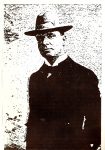
Dr Franklin first showed that lightning is the same as the electricity made by the electrical machine. As the electricity of the electrical machine is got by rubbing glass, so much of the electricity of the air is caused by the rubbing of moist air against dry air. A great deal is made by the turning into vapour or mist of the salt water of the ocean by the sun’s heat or the blowing of the wind. More water is turned into vapour during the heat of summer and autumn than in winter, and this is why there is more lightning in warm than in cold weather.
There is always a good deal of electricity n the air, and in clear weather it is generally positive electricity, but during fogs, rains, or snows it is usually negative electricity, though it changes often. It sometimes happens that two clouds, one charged with positive electricity and the other with negative electricity, come near each other, and then the two kinds of electricity rub together, when a flash of lightning is seen, and thunder is heard.
The lightning is the same thing as the spark from an electrical machine, the only difference being that a flash of lightning is sometimes several miles long, and the spark only a few inches. The little spark gives out only a snapping sound, but if we were able to make a spark as large as a flash of lightning, it would cause as much noise as thunder.
When a cloud filled with one kind of electricity comes near the earth while the earth is filled with electricity of the opposite kind, the cloud may discharge its electricity to the earth. If any tall object, such as a tree, a steeple, or a house, happens to be near where the cloud discharges, the electricity will often pass down it to the earth. In this way houses are sometimes injured and set on fire, and great trees are split up into small pieces. Sometimes, too, human beings and animals are struck and killed. It is not safe, therefore, to stand under a tree or close to a high house during a thunder-storm.
We see lightning in several different forms; sometimes its flash is straight, sometimes it is forked or zig-zag, sometimes it is round like a ball, and sometimes it spreads over the clouds like a sheet of fire. When a thunder-cloud is near the earth the flash comes straight down to the earth, because there is but little air for it to pass through, but when the cloud is a considerable distance from the earth, the air in the path of the lightning is made denser or thicker by being pushed together, and as lightning can pass quicker through thin than through thick air, it flies from side to side so as to pass where it is thinnest. Thus its path is zig-zag or forked. When there is a very great charge of electricity in a cloud it sometimes forces its way through the air in the shape of a ball. What is called sheet lightning is either the reflection or shine on clouds of a stroke of zig-zag lightning which is too far off to be seen, or light discharges of electricity from clouds which have not enough to cause zig-zag lightning.
When lightning passes through air it leaves behind it a vacuum – that is, an empty place – and the air rushing in to fill it makes the noise which is called thunder (ukkonen in Finnish). We do not usually hear this until some time after the flash of lightning, because light travels more than a million times faster than sound. When the thunder-cloud is at a distance, the sound comes to us little by little, and it is then called rolling thunder; but when the cloud is near the earth the sound comes in one great crash. We can generally tell how far off a thunder-cloud is by noting how much time elapses between the flash of lightning and the sound of the thunder. If we can count five as slowly as the tick of a clock between the two, it is certain that the cloud is more than a mile away.
Lightning, in its way to the earth, will always follow the best conductor, and when it strikes a building or a tree it will leap from side to side to find it. It likes pointed things better than round or blunt things, and this is why lightning rods have sharp points. Buildings properly fitted with lightning rods are safe from being struck by lightning, because the rods lead off the electricity into the earth. When a cloud filled with electricity comes over the rods, the electricity will flow silently down them until the cloud is discharged, and we see no flash and hear no thunder; but we feel sure that the building will not be struck. The tops of lightning rods are usually made of silver or are gilded, so that they may not rust and thus become worthless. The lower end of the rod must be carried down into damp earth; if the earth is dry it is better to carry the end into a well, because dry earth is not so good a conductor as moist earth, and the lightning might leap from the rod at the lower end and go into the cellar of the building. High chimneys should have rods on them, because the soot in them is a good conductor, as is also the vapour which rises from them when fires are burning.
The word lightning in Finnish is salama; a flash of lightning is salaman leimahdus.
